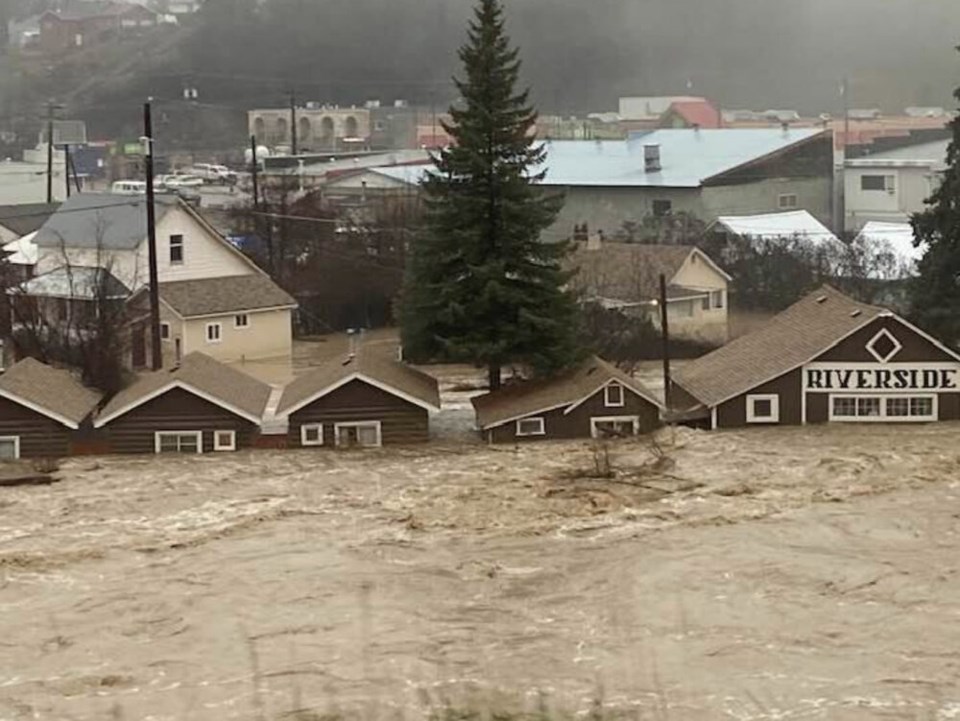Protecting five per cent of Canada’s watersheds could help safeguard more than half the country’s urban areas at risk of downstream flooding, a new study has found.
The , recently published in the journal Ecosystem Services, assessed how natural environments across Canada are preventing flooding in low-lying areas near rivers.
To do that, the scientists used landscape and precipitation data to estimate how much a forest or wetland absorbed rain, said Matthew Mitchell, the study’s senior author and an assistant professor in the University of British Columbia’s Department of Forest Resources Management.
“We’re talking about forests, we’re talking about grasslands, we’re talking about wetlands, Arctic and alpine tundras as well — all of the natural ecosystems across Canada have a unique ability to capture rainfall,” said Mitchell.
Next, Mitchell said they calculated how much water headed downstream and what areas along riverbanks were most at risk should upstream habitats disappear.
Natural 'buffers' protect 358 Canadian population centres from flooding
The study cites the ability of forests and other ecosystems to act as natural “buffers.”
The leaves and needles of a forest, for example, intercept rain. Meanwhile, a tree’s roots help water to penetrate underground instead of quickly flowing overland and overwhelming rivers all at once.
In total, those processes directly protect 3.7 million people in 358 Canadian population centres from flooding, found the researchers. Another 20.1 million people — more than half of Canada’s population — were found to indirectly benefit from nature-based flood protection.
Across the country, protecting crucial natural areas occupied by forests, shrubs, grasses and wetlands could shield 6,000 square kilometres of high-value land representing 54 per cent of Canada’s built-up areas, the study found.
“At least half the population lives in a city where some people would be impacted by a flood,” said Mitchell.
Mitchell and his colleagues — who came from ISNature, Nature Conservancy of Canada, Memorial University and McGill University — also found the same natural ecosystems protect another 74 per cent (16,900 square kilometres) of croplands located in Canada’s floodplains often near cities.
Natural flood protection found highest in B.C. and Quebec
The study identified British Columbia and Quebec — both highly forested areas with lots of precipitation — as areas that would see the most flood protection from nature.
Parts of Manitoba and central Alberta were also identified as higher risk to flood damage should natural ecosystems disappear.
Mitchell said that only eight per cent of the natural areas shielding cities from flooding were found to be actually protected.
Joanna Eyquem, managing director of climate-resilient infrastructure at the University of Waterloo’s Intact Centre on Climate Adaptation, said she was not surprised by the big numbers.
Eyquem, who was not part of the study, said “we’re just at the tip of the iceberg” when it comes to understanding the true flood-protecting value of nature. Moreover, every local study she has seen comes back showing “astronomical” figures.
“Obviously, when you cut down a forest, you lose the attenuating role of the trees. I think it’s a wake-up call to people who see environmental protection as a barrier to development,” said Eyquem.
“It’s not just a nice-to-have. It’s protecting our houses and our infrastructure.”
Study's assumptions underestimate nature's capacity for flood protection, says expert
Younes Alila, another professor in the Department of Forest Resources Management who was also not involved in the research, has spent years investigating the links between logging and increased flood risk. Alila said the study aligns with his work showing the powerful flood-protecting effects of nature.
But he also said the Canada-wide scale of the study appeared to have pushed the authors to make some unrealistic assumptions. Alila said the study made limited calculations that do not consider the flow of water below ground or from melting snow. As a result, he thinks they might “have the right conclusions but for the wrong reasons.”
“I think they likely underestimated the power of nature-based solutions,” Alila said.





